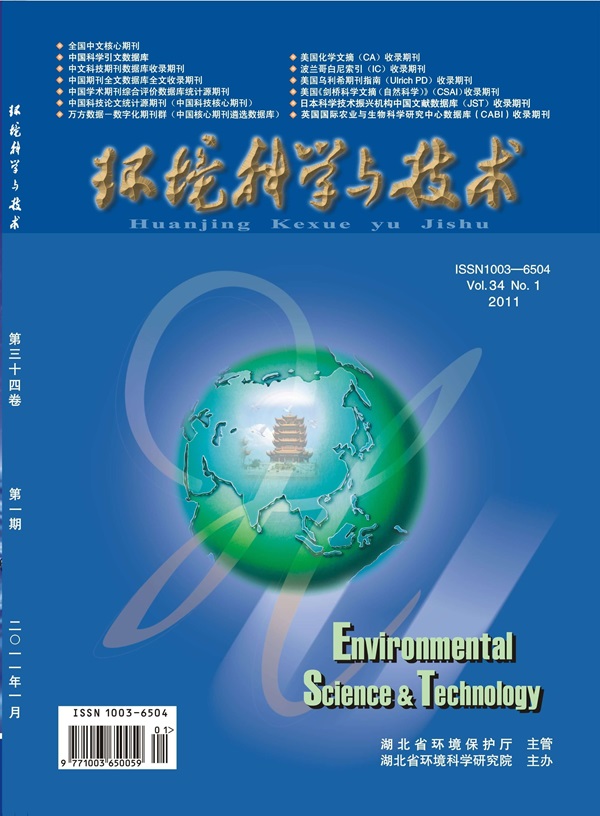Overlooked Role of Iodate in Micropollutant Degradation by UV/Periodate: Kinetic Modeling and Mechanism
IF 10.8
1区 环境科学与生态学
Q1 ENGINEERING, ENVIRONMENTAL
引用次数: 0
Abstract
The periodate (PI, IO4–) is known as an emerging oxidant and disinfectant in water treatment with iodate (IO3–) as the benign end product. However, new results herein strongly suggest that IO3– could contribute to pollutant degradation and trigger disinfection byproduct (DBP) formation in the UV/IO4– process. The degradation of micropollutants, e.g., 17α-ethinylestradiol (EE2), followed two-stage pseudo-first-order kinetics along with the conversion of IO4– (stage I) to IO3– (stage II) in the UV/IO4– process. The radical scavenging experiments and electron spin resonance technique confirmed both reactive oxygen species (e.g., •OH and O3) and reactive iodine species (RIS) (e.g., IO3•), contributing to contaminant degradation in the UV/IO4– system. A kinetic model based on first-principles was further developed to simulate reaction kinetics, revealing that •OH was the primary reactive species responsible for EE2 degradation in stage I, while RIS, especially IO3•, played major contributions in stage II. The photolysis of IO3– in stage II could increase the risk of iodinated DBP (I-DBP) formation, especially under acidic conditions. The new findings of this work broaden the mechanistic knowledge on the UV/IO4– process and highlight the overlooked role of IO3– in the worrisome I-DPB formation in the wastewater treatment.

UV/高碘酸盐在微污染物降解中被忽视的作用:动力学模型和机理
在以碘酸盐(IO3 -)为良性终产物的水处理中,高碘酸盐(PI, IO4 -)是一种新兴的氧化剂和消毒剂。然而,新的研究结果强烈表明,在UV/IO4 -过程中,IO3 -可能有助于污染物降解并引发消毒副产物(DBP)的形成。微污染物如17α-炔雌醇(EE2)的降解遵循两阶段伪一级动力学,同时在UV/IO4 -过程中IO4 -(阶段I)转化为IO3 -(阶段II)。自由基清除实验和电子自旋共振技术证实了活性氧(如•OH和O3)和活性碘(RIS)(如IO3•)在UV/IO4 -体系中对污染物的降解有贡献。进一步建立了基于第一性原理的动力学模型来模拟反应动力学,结果表明•OH是第一阶段EE2降解的主要反应物质,而RIS,尤其是IO3•在第二阶段起主要作用。II期的IO3 -光解可增加碘化DBP (I-DBP)形成的风险,特别是在酸性条件下。这项工作的新发现拓宽了对UV/IO4 -过程的机理认识,并强调了IO3 -在废水处理中令人担忧的I-DPB形成中被忽视的作用。
本文章由计算机程序翻译,如有差异,请以英文原文为准。
求助全文
约1分钟内获得全文
求助全文
来源期刊

环境科学与技术
环境科学-工程:环境
CiteScore
17.50
自引率
9.60%
发文量
12359
审稿时长
2.8 months
期刊介绍:
Environmental Science & Technology (ES&T) is a co-sponsored academic and technical magazine by the Hubei Provincial Environmental Protection Bureau and the Hubei Provincial Academy of Environmental Sciences.
Environmental Science & Technology (ES&T) holds the status of Chinese core journals, scientific papers source journals of China, Chinese Science Citation Database source journals, and Chinese Academic Journal Comprehensive Evaluation Database source journals. This publication focuses on the academic field of environmental protection, featuring articles related to environmental protection and technical advancements.
 求助内容:
求助内容: 应助结果提醒方式:
应助结果提醒方式:


